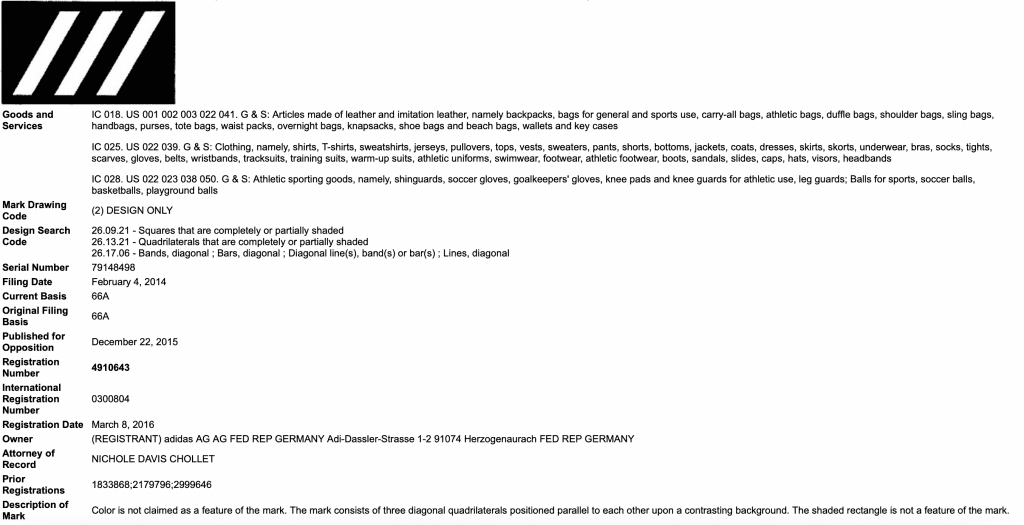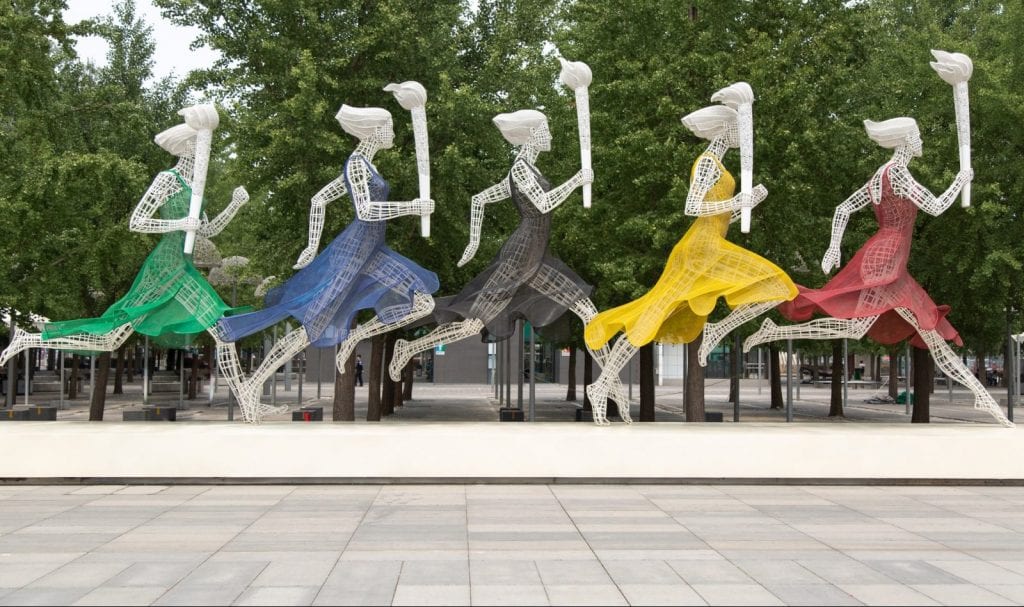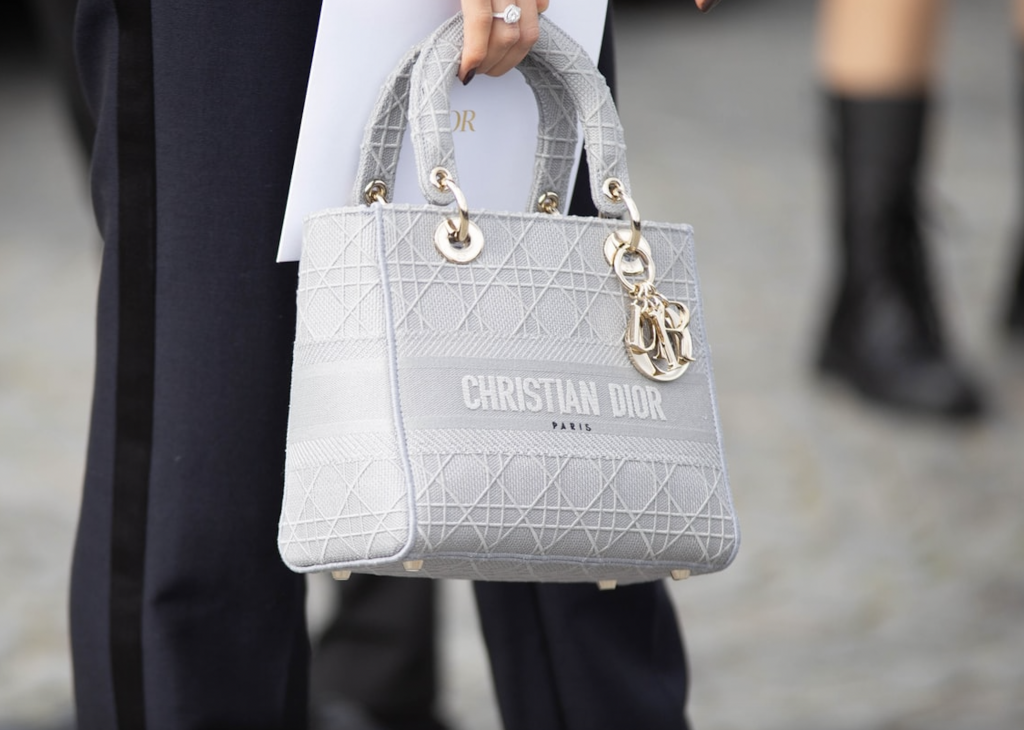A federal court has sided with adidas in its quest to shut down a counterclaim waged by Thom Browne that was aimed at getting one of the German sportswear giant’s three-stripe trademark registrations invalidated. In an order on Tuesday, Judge Jed Rakoff of the U.S. District Court for the Southern District of New York said that he is in “complete agreement” with the report that Magistrate Judge Robert Lehrburger submitted last month, in which he recommended that Judge Rakoff dismiss the Browne’s counterclaim given that the New York-headquartered fashion brand fails to plausibly allege that adidas’ three-stripe Quadrilaterals mark is aesthetically functional, the basis for its cancellation counterclaim.
In response to the trademark infringement lawsuit that adidas filed against Thome Browne in June 2021, in which adidas alleges that Browne has “encroached into direct competition with [it] by offering sportswear and athletic-styled footwear that bear confusingly similar imitations” of its three-stripe mark, Browne lodged a counterclaim seeking cancellation of adidas’ Three-Quadrilaterals trademark registration (No. 4,910,643) on grounds of aesthetic functionality. In short, counsel for Browne argued that trademark registration for adidas’s three-stripe mark (the “challenged registration”) – which consists of “three diagonal quadrilaterals positioned parallel to each other upon a contrasting background” – puts competitors at “a significant non-reputation-related disadvantage” since that it “is not limited to any specific number or orientation of stripes,” and thus, should be invalidated.
Browne has argued, among other things, that in the case at hand, adidas is “asserting its registered trademark against Thom Browne [over its] use of four horizontal, parallel bands,” and thus, is “admit[ting] that its Three Quadrilaterals [mark] is not limited to a diagonal orientation or to three stripes.”
Unpersuaded by Browne’s claims, Magistrate Judge Lehrburger stated in his September 21 recommendation and report that “aside from stating that ‘third party clothing designers use stripes’ in varying orientations and placements on apparel, Thom Browne has not alleged that the use of three parallel stripes – the subject of the challenged [adidas] registration – is ‘essential to effective competition in a particular market.’” As such, the Magistrate Judge stated determined that Thom Browne failed to “assert a plausible claim that the trademark protected by the challenged registration is aesthetically functional.”

Counsel for Browne filed an opposition to Lehrburger’s recommendation and report with the court early this month, urging Judge Rakoff to reject the recommendation, and primarily arguing that “any alleged deficiencies in [its] counterclaim … are entirely the result of adidas’ unwillingness and inability to define its alleged ‘Three Stripe mark’ with any specificity, including in the challenged registration.” Browne asserted in its October 5 objection that “adidas broadly requests an injunction against Thom Browne’s use of two or four stripes on apparel based on its Three Stripe mark,” and “in turn, Thom Browne asserted its counterclaim for cancellation of the challenged registration based on adidas’ broad definition of its ‘unitary’ Three Stripe mark, which includes the challenged registration.”
Lehrburger’s report “erroneously limits the scope of [adidas’s] challenged registration” to just three right-leaning stripes, which is not only “inconsistent with the registration, itself,” but “ignores the breadth of, at a minimum, the common law rights in the Three Stripe Mark as asserted by adidas in this action,” Browne argued. In doing so, “the Magistrate Judge has failed to recognize adidas’ attempts at hamstringing its competitors’ ability ‘reasonably to replicate important non-reputation-related product features’ – namely, stripes on apparel,” Browne contended.
At the same time, while adidas “may have pled that consumers recognize certain configurations of three-stripes as ‘marks,’ such as three distinct, evenly spaced, different length, parallel stripes on its shoes or symmetrically down both sides of a jacket,” Browne maintained that “there is nothing in the challenged registration or [in adidas’] pleadings that limit the size, placement, orientation, color, etc. of its alleged ‘Three Stripe mark.’” By omitting “pertinent information as to how the mark should actually look and be used” from the “succinct description” listed in the trademark registration, Browne argued that adidas has been able “to assert a far broader mark than that reflected on the face of [its] registration … and usurp from public use rights that it simply does not have.” This will “no doubt have a chilling effect on the use of stripes by apparel designers,” which Browne stated, is “a key pillar to the finding of aesthetic functionality.”
With the foregoing in mind, Browne further asserted that despite Lehrburger’s claim to the contrary, it “has alleged sufficient facts to sustain its counterclaim,” including by “expressly alleg[ing] that ‘clothing designers use stripes in a wide variety of orientations, numbers and placements on clothing, including in a diagonal orientation and/or parallel to one another’” and including “[s]ome examples depicting a jacket and a swimsuit which both display three parallel, diagonal stripes, akin to those depicted in the challenged registration.” Such an allegation “makes clear that prohibition of the use of such stripes, including three diagonal parallel stripes, would put clothing designers at a ‘significant, non-reputation related disadvantage,’” per Browne.
Nonetheless, Judge Rakoff granted adidas’ motion to dismiss Thom Browne’s counterclaim, and additionally, granted adidas’ motion to strike Thom Browne’s aesthetic functionality affirmative defense in its entirety and strike the bulk of Browne’s unjust enrichment affirmative defense. The did side with Browne, in part, refusing adidas’ bid to get the brand’s laches, acquiescence, and estoppel defense tossed out.
The case is adidas America, Inc., et al., v. Thom Browne, Inc., 1:21-cv-05615 (SDNY).











